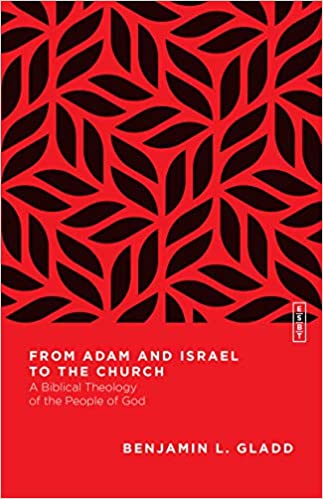A Book Review from Books At a Glance
By Jeremy Greiner
What does it mean to be the people of God? This is a fundamental question for any Christian who seeks to understand his or her identity and heritage as a member of God’s universal church. And the importance of this question has only increased as society pushes Christians to find their primary identity outside of who they are in Christ. To establish a foundation upon which to understand Christian identity, Gladd writes this study in biblical theology to map the development of the theme of “the people of God” throughout the Scriptures.
Benjamin L. Gladd is associate professor of New Testament at Reformed Theological Seminary and is the editor of the new book series called “Essential Studies in Biblical Theology.” Consciously patterned after the well-known series “New Studies in Biblical Theology” (InterVarsity Press), ESBT seeks to apply the biblical-theological method to fundamental, broad, and essential themes found in the storyline of the Bible. This first book of the series wastes no time in harvesting the fruit of the biblical-theological method.
The main concern of the book is “to examine the nature of the people of God from Genesis to Revelation through the lens of being in God’s image” (4). To demonstrate this, the book argues as follows.
(Chapters 1-2) Gladd starts by focusing on how Adam imaged God as prophet, priest, and king over the cosmic temple of Eden. God chose to exercise his rule over creation by making Adam and Eve in his image, which essentially means that “Adam and Eve represent Him on the earth in all their thoughts and actions” (12). Adam and Eve failed in this duty, leading God to promise a future restoration through the line of Seth.
(Chapters 3-4) Following the fall and promised restoration of Adam’s race, Gladd focuses on how that prophetic, priestly, and kingly image of God in Adam is recapitulated on a national scale in Israel. Like Adam, Israel is to rule over the promised land, act as a nation of priests to the Gentiles, and exercise their prophetic role by teaching and embodying the law of God. The continuity with Adam’s role over creation is striking, giving us a better picture by which to understand what God expects His people to be.
(Chapters 5-7) With Israel’s eventual fall and promised future restoration, the focus of the book then shifts to Christ’s recapitulation and ultimate expression of God’s image as prophet, priest, and king. Jesus Christ is the perfect expression of God’s image, and thus the perfect embodiment of the identity of God’s people, succeeding where all others failed in representing God in thought and action.
(Chapters 8-11) With Christ acting as head over the Church, the prophetic, priestly, and kingly dimensions of God’s image form the root identity of the Christian Church, just as it has for the people of God throughout the ages. Although Christians are not divine like Christ, through union with Him, the church is enabled to reap the benefits of Christ’s work and live in ever-increasing conformity to the image of Christ, who is the true image of God. The role of the church as prophet, priest, and king under Christ will continue even into the new creation, where God will once again dwell intimately and physically with His image-bearing people.
The main take away from this book is that a consistent identity can be observed for the people of God throughout the ages, and that is found in imaging God as prophet, priest, and king. The various covenants God made with his people should be seen in continuity with each other rather than discontinuity. And yet, in this continuity, there is clear development as God progressively redeems creation to become a temple where he can dwell with humanity once again. This identity must form the thinking and activity of all believers today as they anticipate the new creation, where they will image God perfectly as prophets, priests, and kings under their Lord, high priest, and ultimate prophet Jesus Christ.
I found this book to be a tremendously helpful summary of the theme of the people of God. Not too complicated yet loaded with theological nuance, this book is particularly helpful for a pastor or Christian layperson who wishes to get a handle on this important theme in the Scriptures. The relative dearth of footnotes limits the book’s usefulness in academic settings, but any academic would surely benefit from the clear and logical biblical theology that Gladd has produced.
The author is clearly paedobaptist and covenantal, but this should not cause credobaptists or dispensationalists to shy away, for there is much in this book that all sides agree on. I felt that Gladd’s critique of Dispensationalism in the introduction and in various places in the book was an unnecessary distraction, since debating Dispensationalism, though perhaps relevant, was not the focus of this book, nor should it be. Christians of all stripes will profit from the thoroughly evangelical theology this book provides. It also would have been nice to see more discussion on how kings function as covenantal mediators for the people of God in general throughout the various covenants.
Nonetheless, this book is an excellent resource. If you are looking for a strong introduction to this biblical-theological theme, this book is highly recommended! You will not go wrong as you mine the riches that this book has to offer.
Jeremy Greiner has an MDiv from Trinity Evangelical Divinity School.
